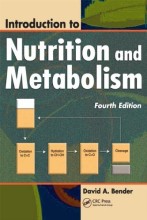NP19 Molecular and physiological regulation
15 important questions on NP19 Molecular and physiological regulation
The pathway from pyruvate to Acetyl-CoA:
- Produces lactic acid
- Is part of gluconeogensis
- Is metabolically irreversible
- Requires more energy than it produces
The pathway from pyruvate to Acetyl-CoA:
- Produces lactic acid
- Is part of gluconeogensis
- Is metabolically irreversible
- Requires more energy than it produces
Which of these statements is true?
- 1. at least 4 of the 16.5 ATP formed by the complete oxidation of glycerol (via dihydroxyacetone phosphate) are obtained by substrate level phosphorylation
- 2. Alanine, tryptophan and iso-leucine are glycogenic amino acids
![]()
- None
- Both
- 1
- 2
4. Only statements 2 is true
1. Is false it is 3
2. True
- Higher grades + faster learning
- Never study anything twice
- 100% sure, 100% understanding
Which of these statements is true?
- 1. at least 4 of the 16.5 ATP formed by the complete oxidation of glycerol (via dihydroxyacetone phosphate) are obtained by substrate level phosphorylation
- 2. Alanine, tryptophan and iso-leucine are glycogenic amino acids
![]()
- None
- Both
- 1
- 2
4. Only statements 2 is true
1. Is false it is 3
2. True
Glucogenic amino acids can follow two metabolic pathways: gluconeogenesis or direct oxidation. Which component is, in most cases, a common intermediate for both pathways?
- 3-phospho-glyceraldehyde
- Phospho-enol pyruvate
- Pyruvate
- Acetyl-CoA
![]()
Glucogenic amino acids can follow two metabolic pathways: gluconeogenesis or direct oxidation. Which component is, in most cases, a common intermediate for both pathways?
- 3-phospho-glyceraldehyde
- Phospho-enol pyruvate
- Pyruvate
- Acetyl-CoA
![]()
Rank these fatty acids for their ATP yield upon complete oxidation!
Start with the lowest
- (C18:0) < (C16:0) < (18:2) < (C18:3)
- (C18:0) < (C16:0) < (18:3) < (C18:2)
- (C16:0) < (C18:0) < (18:2) < (C18:3)
- (C16:0) < (C18:3) < (18:2) < (C18:0)
What is the metabolic rate per organ?
RMR tissues (per kg tissue)
Brain, liver, heart, kidneys: ± 60% of REE
- weight of organs <6% of body weight
- Skeletal muscle: 40%-50% of BW, 18-25% REE
- Human adult: REE ! 25 kcal/kg weight day
What uses your brain with a metabolic rate when fasting (initial)
Blood level: ± 5mM = 0.9 gram/L
hepatic glucose production: 180 g/day
- thus, brain consumes 2/3 of hepatic glucose
- both glycogenolysis and gluconeogenesis (50%)
induced by glucagon, inhibited by insulin
Which organs play a large role in gluconeogenesis when
- Post-absorptive state - standard (starch) diet
- Fasting (24-48h)
- Post-absorptive state - protein-enriched diet
- Post-absorptive state - standard (starch) diet
- liver 70-75%
- Fasting (24-48h)
- kidney 50-55%
- Post-absorptive state - protein-enriched diet
- kidney 40-45%
What are the cellular regulations of different pathways?
- Glycolysis/glycogenesis: HK, PFK and PK/GyS
- Pyruvate fate: PDH, PCK
- Gluconeogenesis: PEPCK
- TCA cycle: CS
- Fatty acid import into mitt's: Cpt1a by Malonyl-CoA
- TG lipolysis/lipogenesis
- Protein metabolism: N-balance, protein turn-over
PDHC phosphorylation =
What happens when there is lots of acetyl-CoA and NADH?
Gluconeogenesis / glycogenolysis =
+ what inhibited and activates the processes
- Pyruvate carboxylase
- PEPCK (phosphoenolpyruvate carboxykinase)
- Fructose-1,6-biphosphatase
- Glucose-6-Phosphatase
- Glycogen Phosphorylase
Glucagon/cortisol activates
- Pyruvate carboxylase
- PEPCK (phosphoenolpyruvate carboxykinase)
- Fructose-1,6-biphosphatase
- Glycose-6-Phosphatase
Glucagon alone activates
- Glycogen Phosphorylase
- Pyruvate kinase
What is a role for leptin in oxidation of fatty acids?
leptin signal form the muscle --> AMPK
AMPK-Pactive --> ACC
ACC-Pinactive --> no malonyl CoA --> no cytoplasmic fatty acids
Leptin --> increases FFA oxidation
What happens in the absence of (or resistance to) leptin?
FA can not enter mitochondria
No oxidation --> fat storage increases --> disturbed insulin-stimulated glucose uptake
The question on the page originate from the summary of the following study material:
- A unique study and practice tool
- Never study anything twice again
- Get the grades you hope for
- 100% sure, 100% understanding
































